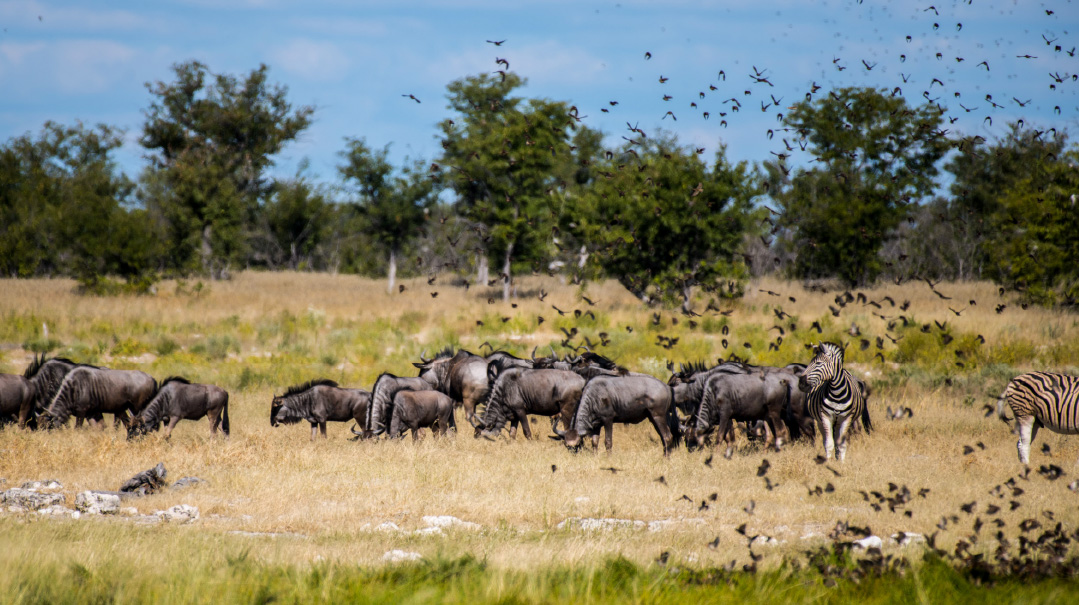Rules of the Jungle

Zebras, ostriches, and Jewish skeletons in a trek through Namibia

As told to Eliyahu Ackerman by Meir Alfasi
Photos: Meir Alfasi
Diamonds in the sand, the last standing shul, and a tombstone with a kosher l’Pesach engraving were just some of the treasures nature photographer Meir Alfasi hoped to discover on a trek through Namibia in southwest Africa. Surrounded by zebras, ostriches, termites, and malaria-carrying mosquitoes, would he find the Jewish skeletons he was looking for in the endless desert expanses of the emptiest country in the world?
I
n the cemetery at Swakopmund, a resort village on the western coast of Namibia, I’m looking for a Jewish tombstone with a kosher l’Pesach label.
It’s not a joke. But first, a little background on Swakopmund, which was founded in 1892 as the main harbor for the Imperial German colony in Namibia — formerly known as South West Africa. In this beachfront town, with picturesque homes that seem to have been transplanted from the Bavarian mountains and set down in the heart of southern Africa, you won’t find a lot of Europeans today, but many of the store marquis are still in German. Before Namibian independence from South Africa in 1990, many street names were in their original German, but that changed after the revolution, when, for example, the main street’s name was changed from Kaiser Wilhelm Strasse to Sam Nujoma Avenue, after the then-president who renamed the street after himself.
Notwithstanding Swakopmund’s European roots and multicultural history, I wanted to discover if there was a kernel of truth to an anecdote I’d heard about a Jewish family from Vilna who, at the beginning of the 20th century, ended up in a remote corner of Africa. The family did well in business, but due to a lack of Yiddishkeit in the region, the children grew up totally ignorant of their heritage. Before the family patriarch passed away, he requested that the family place Hebrew letters on his headstone, which he knew his own parents and grandparents had done. But despite their desire to fulfill their father’s will, his children were stumped: They had no idea what a Hebrew letter looked like. According the version of the story I’d heard, only the youngest son refused to give up the quest. He turned the house over from basement to attic until he found a Jewish text on a box of matzos, which he carefully copied onto the headstone: Kosher l’Pesach.
Knowing that I’m a nature photographer who’s always looking for new frontiers, a friend and historical researcher suggested I make the trip to Namibia. I’d have my fill of rhinos, ostriches, and rolling sand dunes stretching for miles, and maybe I’d even find the alleged grave.
I’d like to report that I quickly upped and packed my bags for Namibia, but really, I traveled to the offices of Salt of the Earth Ltd., a salt company in the town of Atlit near Haifa. That’s where I’d be able to find Ms. Jill Katz, the one responsible on behalf of the honorary Namibian consul in Israel for issuing entry visas to this exotic country.
Ms. Katz studied me skeptically, from my yarmulke, tzitzis and beard to the soles of my dusty shoes.
“And what would you like to do in Namibia?” she queried cautiously.
I told her that I’m a nature photographer, and I’d like to document rhinos and antelopes.
“And that’s it?”
I shrugged. “And if I’m able to find a kosher for Pesach gravesite, it will be a bonus.”
Oops! We could not locate your form.







